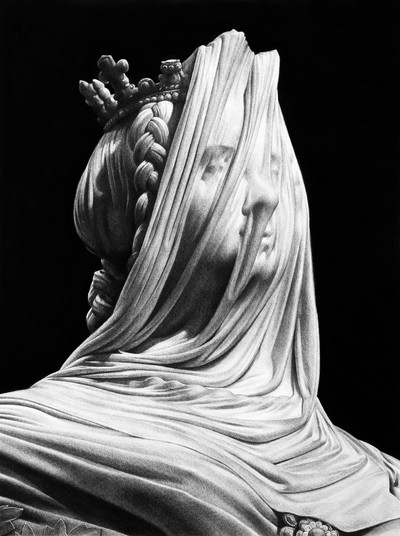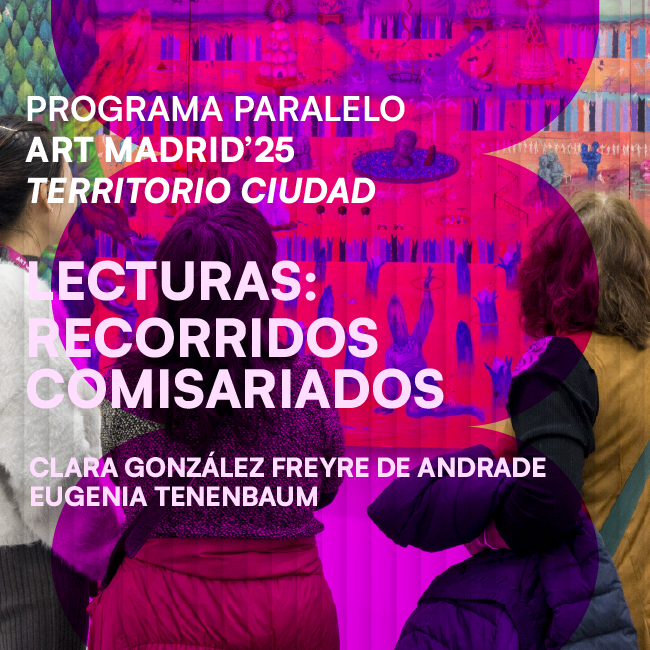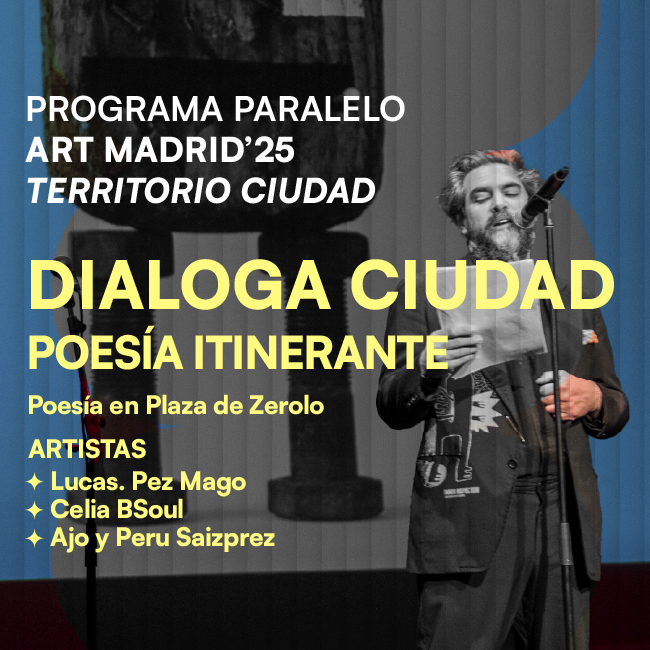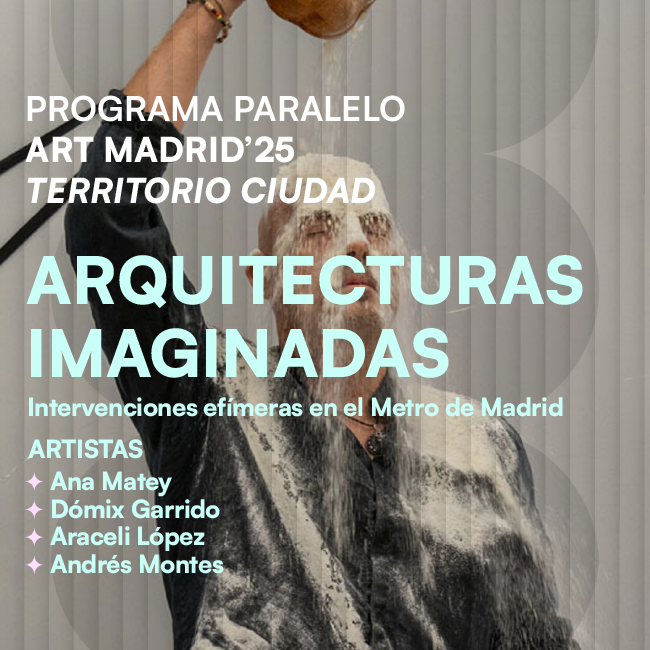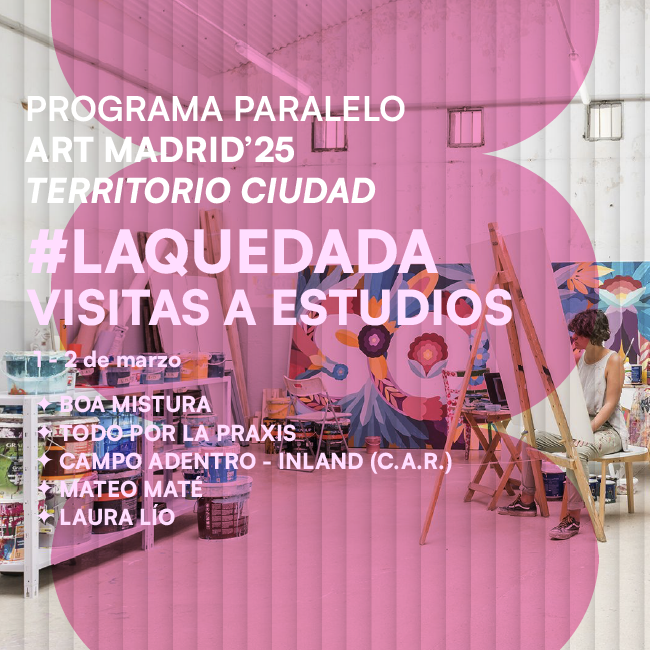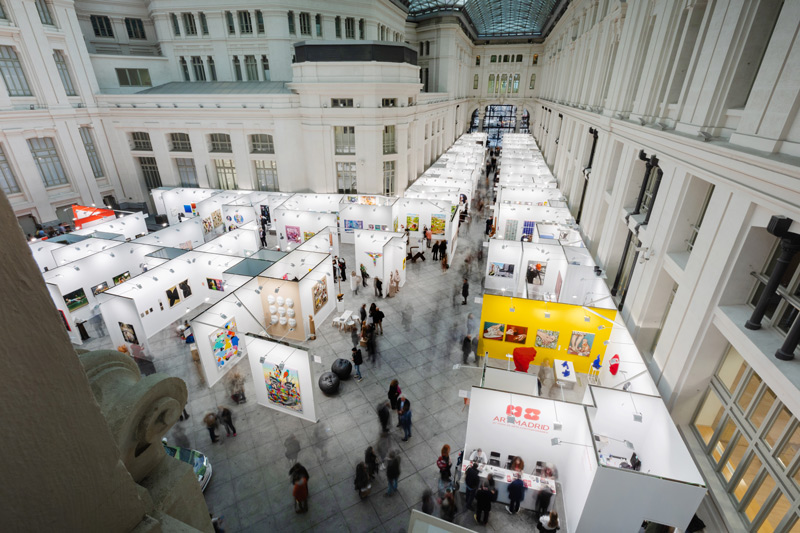ART MADRID DONATES 5 WORKS TO THE MUSEUM OF CONTEMPORARY ART
Feb 25, 2022
art madrid
Art Madrid, which will be held from February 23 to 27 at the Galería de Cristal del Palacio de Cibeles, has selected 5 works that will be donated to the Museo de Arte Contemporáneo (MMAC), which depends on the Madrid City Council. The selected pieces are: 'Isabel II' by Kepa Garraza; 'Humo VI' by Isabel Alonso Vega; 'Palacio de Cristal' and 'Madrid, Gran Vía, 2018' by Leticia Felgueroso; and 'Flexia 9' by Toño Barreiro. The four Spanish artists have an already consolidated career within the contemporary art scene in our country and with an important international projection. The works are currently on display at the fair and once it is over, this Sunday, February 27, they will be moved to the museum so that they can be admired by all visitors.
Las piezas elegidas son:
"Isabel II' by Kepa Garraza made in compressed charcoal on paper in 2021. The works of Kepa Garraza (Berango, Vizcaya, 1979) reflect on the nature of the images we consume every day. Through fictitious scenarios where a parallel reality is recreated, he invites the viewer to question issues related to identity and the manipulation of information. His work questions official discourses, and questions the processes of institutional legitimization. His ironic and acid look offers alternatives to the reality we know and proposes a healthy exercise: to always doubt the official version. This piece can be seen at Victor Lope Contemporary Art Gallery.
'Humo VI', exhibited at Hispánica Contemporánea gallery, is Isabel Alonso Vega's sculpture created with smoke and methacrylate in 2018. The works of Isabel Alonso (Madrid, 1968) speak of the intangible, of that which is there but can hardly be seen, it is almost impossible to touch, let alone catch. The intangible becomes present and presents itself enclosed, but not immobile, since the forms have their own life and change according to the lighting and the perspective from where you look at them.
The photographs 'Palacio de Cristal' and 'Madrid, Gran Vía 2018', exhibited at the BAT Alberto Cornejo gallery, are two of the pieces that will be donated belonging to Leticia Felgueroso. The works of Felgueroso (Madrid, 1963) are based on urban scenes of an attractive chromatism that make us imagine a different city. Her photographs can be found in numerous Spanish embassies around the world and she has been commissioned by entities such as Ifema or the Thyssen-Bornemisza National Museum.
'Flexia 9' by Toño Barreiro, made in enamel on aluminum in 2018, is another of the pieces that will be incorporated into the collection of the Museum of Contemporary Art and can be seen at Shiras Galería. Toño Barreiro (Zamora, 1965) has been developing, since the mid-1980s, a multidisciplinary work that alternates photography, painting, sculpture and digital processes. In his work we can observe a whole series of new methodologies and creative processes that give rise to sinuous and synaesthetic paintings, playing with the concept of deconstruction, the symbiotic or the most elementary biological processes.

